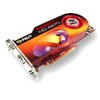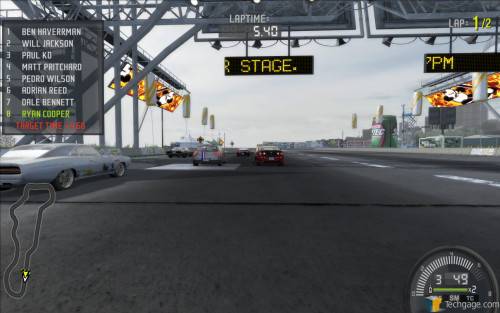- Qualcomm Launches Snapdragon 4 Gen 2 Mobile Platform
- AMD Launches Ryzen PRO 7000 Series Mobile & Desktop Platform
- Intel Launches Sleek Single-Slot Arc Pro A60 Workstation Graphics Card
- NVIDIA Announces Latest Ada Lovelace Additions: GeForce RTX 4060 Ti & RTX 4060
- Maxon Redshift With AMD Radeon GPU Rendering Support Now Available
Palit Radeon HD 4870 512MB

If you’ve been holding off on an upgrade for a while, there’s no reason to continue if a gaming addiction is pulling at your sleeve. The selection for mid-range cards right now is ideal, and anything you pick up will deliver good performance for the money. The best card for the buck right now might be the HD 4870, and we take Palit’s version for a spin to find out why.
Page 9 – Need for Speed: Pro Street
Each graph for our benchmarking results are labeled with the resolution that the game was played at, while omitting secondary settings such as Anti-Aliasing, Anisotropic Filtering, texture quality, et cetera. To view all specific settings that we used, please refer to our testing methodology page, where screenshots show the exact settings used.
Need for Speed: Pro Street
Electronic Arts is one of the largest game publishers in the world, and because of that, they have plenty of fans and plenty of enemies. Even if you don’t like them, it’s hard to dispute the fact that many of their games are solid, one being anything from the Need for Speed series.
“Pro Street” received rather poor reviews upon launch, and for mostly good reason. It removes the freedom of being able to explore a city at your leisure, which to many, is a huge step backwards. But despite that fact, it’s still a great game if you enjoy the series and want an offering that’s a little more realistic than previous versions (in terms of money and damage).
Our run through consists of racing through two laps at the Chicago Airfield, something that takes about three and a half minutes to accomplish from the moment we begin recording frames. The beginning of each race shows an automated camera fly-by over the cars in the race – we begin recording our FPS as soon as this clip begins.
Settings: Our lowest resolution uses fully default settings, while the 1920 resolution ups the AA to 4x and enables Anisotropic texture filtering.


What can be said? The HD 4870 performs exceptionally here, even surpassing what the GTX 280 could muster. At FPS like these, it almost makes little real-world difference adding in a second GPU.
Support our efforts! With ad revenue at an all-time low for written websites, we're relying more than ever on reader support to help us continue putting so much effort into this type of content. You can support us by becoming a Patron, or by using our Amazon shopping affiliate links listed through our articles. Thanks for your support!






